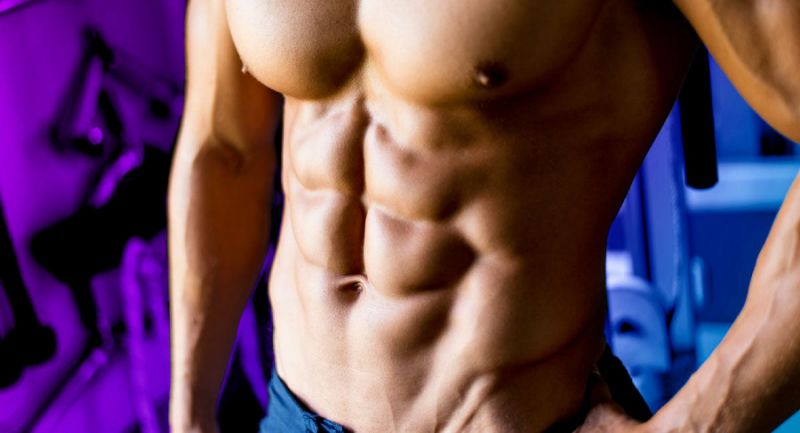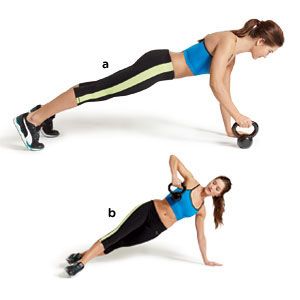
The best online fitness resource you'll ever need. We filter out the BS to ensure you meet your health and fitness goals!

The best online fitness resource you'll ever need. We filter out the BS to ensure you meet your health and fitness goals!

It’s common enough for people to think of their core or their trunk as just their abs- specifically, their rectus abdominis (the ‘six pack’ muscles). With this in mind, when they are working their core, people tend to go for exercises that work the rectus abdominis.
This isn’t a good idea: rather, we need more moves like the side plank row in our routines.
You absolutely should pay attention to your rectus abdominis. It plays a vital role in maintaining strength and stability and will give you a highly prized six-pack look when you’re at a low enough bodyfat percentage.
However, if you only work the rectus abdominis, or even if you favour it as much as many people do, you will ultimately end up with a pretty weak core. This will mean that your other main lifts will lag behind where they should be, as your core is used as a primary stabilising component during every major lift (squat, bench, deadlift, overhead press, and so on), and you will likely suffer postural problems. You will also be far more injury prone than you would be with a strong core, as keeping your body safe under load is one of the core’s main jobs.
Instead, you want to focus attention more or less equally between the four main components of your midsection– both your rectus and your transvers abdominis (the deep tissue of your core), and your inner and outer obliques (the muscles that run along the sides of your core, vital for twisting and resisting torsion).
Doing this will give you a solid, well-rounded, functional core that will keep you safe and strong throughout every other aspect of your athletic life and will enable you to maintain good posture.
This is where the side plank row comes into play.
We want to see side planks of any and every variety in everybody’s training regimes. As a static movement, they test and work full body strength and balance.
They will work shoulder girdle stability and proprioception as you push the ground away and keep yourself stable through your grounded arm (one of only two points of contact with the ground- more on this below). They will work the transverse abdominis as you fight to keep your whole body stable, the same as any plank should do. And, more specifically to the side plank, there will be a lot of tension going into the obliques as they keep your body from sagging towards the ground.

However, as with regular planks, side planks have a ceiling. They plateau early.
When you first start, you’ll be shaking all over the place, overbalancing, with your core giving out and sagging to the ground even as your shoulder shakes so hard your teeth chatter.
Then you will adapt. It will become comfortable and there will be little overload from here on out.
At this point, you need to add something else- either a little weight, or movement in a new plane… or both. Enter the side plank row.
This will put more resistance into the core, legs and obliques, whilst the added movement through a different plane (depending on the variety you choose to go with) will add a greater stabilising factor, as maintaining good posture through all of this will be very challenging.

This is the side plank row in its classic form. It will test your full core, with emphasis through the shoulders and obliques, as any good side plank should. The rowing motion with the dumbbell will create the imbalance needed from this move. Try to move your body as little as possible- if you can manage to keep your torso entirely still, other than the arm rowing, you will be demonstrating strong core balance and control.
To perform the side plank with dumbbell rows:

A variation on the classic.
Performing the side plank row with cables will give you more tension, as the cables don’t lose resistance through the move, and will give you a greater stabilising effect, as the weight will be trying to pull you forwards, not down.
To perform:
Set up a cable machine with a D-handle at the lowest setting. Set the weight to 5-20kg (starting lighter as you get the hang of it)
To make the most of your side plank rows, following these 3 tips:
You don’t want to sag through the shoulders, core, or hips. With this in mind, keep everything tight and engaged. Make sure your shoulders are strong and stable, clench your butt cheeks throughout, and make sure you are pushing your hips upwards.
This will help with the above point but will also lead to greater stability training through the shoulder girdle. Don’t rest passively on your hands- push the ground away. This will keep the tissue in your shoulders engaged throughout.
If one side is harder than the other, it’s perfectly natural. You have a muscle imbalance. Begin on this side and do a few extra reps- it will soon catch up. In addition, if you find your hips popping forwards or your body wobbling, it means the weight is too much. Drop it down. Control is everything.
Follow these tips, bring side plank row variations into your routines on a regular basis, and you should find yourself with a strong, stable trunk able to keep you safe as you take on anything.